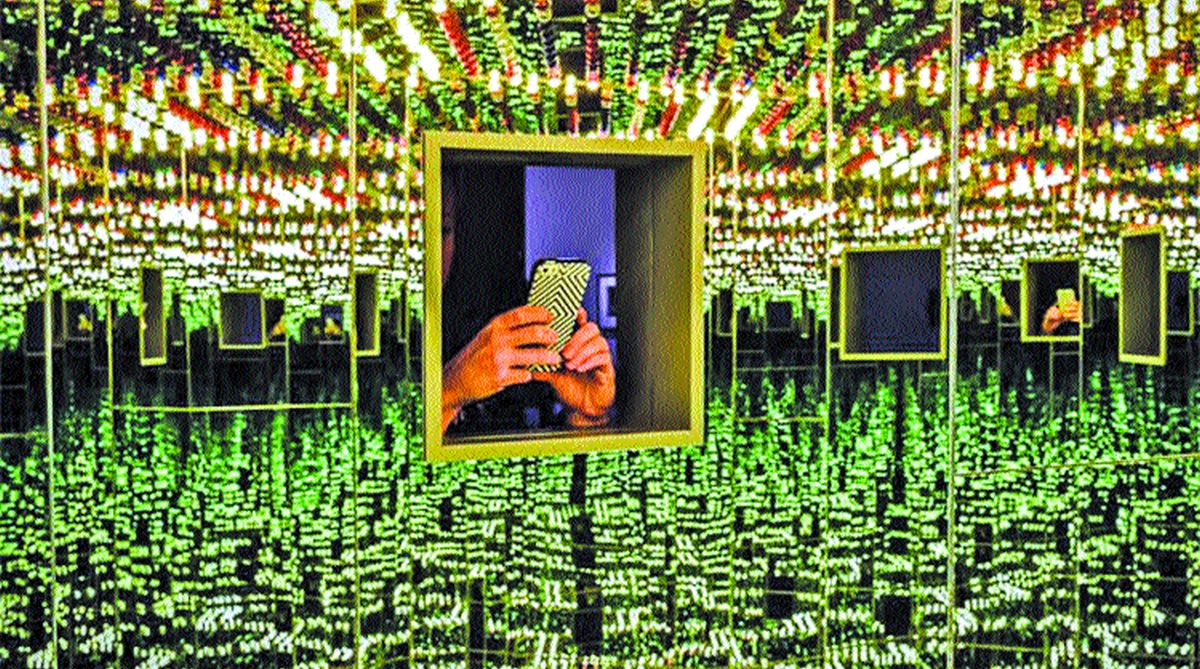Two dead as car plows into crowd in Germany’s Mannheim
At least two persons have been confirmed dead, and several others injured after a car plowed into a crowd in downtown Mannheim, a city in southwestern Germany, on Monday, local police said.
Museums will continue to encourage photography, even as some of us yearn for at least a middle ground. The problem is how we interact with other people, and whether anything will fill the void left by more traditional exhibitions.

A visitor pokes her op-art smartphone into the window of “Infinity Mirrored Room-Love Forever” during 2017 press previews for “Yayoi Kusama: Infinite Mirrors” at the Hirshhorn in Washington. Photo by Bill O’Leary
I had never seen the Holocaust Museum’s permanent collection. As the daughter of a Jewish refugee, I knew it would feel deeply personal, prompting me to think about what might have happened had my father not fled Germany and found safety in 1938, and to mourn the millions of victims who hadn’t.
As I made my way through the museum last year, I heard a man’s voice. I was on the middle floor, which details the Nazis’ concentration camps, gas chambers and killing fields, when he walked past me. The man was jabbering loudly about his dinner plans – on his phone.
Advertisement
The US Holocaust Memorial Museum asks us to be respectful of fellow visitors. But shouldn’t that be obvious? Not today. We’ve become so accustomed to interacting through our phones that we’ve forgotten about everyone else in the room. That obliviousness has found its way into more and more exhibitions across the country, as museums rebrand themselves as community spaces that foster “interaction” with hashtags and tweets.
Advertisement
Encouraging that interaction has come at a cost. Consider the Renwick Gallery’s latest exhibition, No Spectators: The Art of Burning Man. The artwork is exactly what you’d expect to see on Instagram: immersive, interactive and eye-catching. And sure enough, the museum invites visitors to use a hashtag that’s been on Instagram more than 8,000 times.
What isn’t apparent on Instagram is the crush of humanity that results when everyone points their phone at a single object. During a weekend visit to the Renwick in April, wherever I walked I was either stuck behind someone snapping a photo or stepping into someone else’s shot.
It didn’t help that the place was packed. (In its first month, “No Spectators” had more than 130,000 visitors.) But this has nothing to do with crowds. It’s about priorities. Those visitors were so concerned with their own photos that they neglected people like me who were trying in vain not to trip over a crouched Instagrammer or an outstretched arm.
I have nothing against taking pictures of art. If you want to be among the crowds that snap photos of the ‘Mona Lisa’ by all means: go ahead. There’s an important debate to be had over the effect Instagram has had on art lovers, and whether people can truly connect with art when they’re looking at it through a camera lens.
Blame this all you want on the rise of social media or on millennials like me, but this isn’t about that, either. It’s about how we treat one another, and the role technology is playing in our human – not digital – interactions. I’m firmly against talking on the phone at the Holocaust Museum. I’m also against snapping a photo of the ‘Mona Lisa’ with complete disregard to the person behind you – who, by the way, is now looking at her famous gaze through the tiny screen in your hand.
In the past, a museum was where you could lose yourself in a world fashioned out of oil paint. The etiquette was clear. Visitors were expected to stand at a distance, not only to protect the art, but also because this allowed the rest of us to see it, too.
Now the rules are hazier. Museums are doing away with the velvet rope that separated mere mortals from the masterpieces. Some – including the Renwick and Hirshhorn – are encouraging us to touch the work. When the paintings of Barack and Michelle Obama debuted at the National Portrait Gallery in February, the museum accommodated the crowds by establishing lines for photo-taking.
The result is that museums have never felt more welcoming. Art is no longer cold, standoffish and unapproachable. Works by artists such as Yayoi Kusama, whose exhibition at the Hirshhorn inspired countless selfies and never-ending lines, have shattered those stereotypes by creating viral installations that allow viewers to step inside the art.
Much of the debate surrounding the rise of “made-for-Instagram” exhibitions has targeted museums. But Nora Atkinson, the curator behind “No Spectators,” disagrees with the notion that the Renwick chooses large-scale installations only for the Instagrams. For her, it’s about showcasing imaginative works, and challenging the idea that art is a secret language few understand.
The result may be Instagrammable, though only by chance. “That’s the way visitors communicate these days,” Atkinson said. “Twenty-first-century museums are as much about being a social space as an educational space.”
So phones are encouraged. The use of hashtags is celebrated. And, according to Atkinson, the photos will never stop. Museums will continue to encourage photography, even as some of us yearn for at least a middle ground.
The problem is how we interact with other people, and whether anything will fill the void left by more traditional exhibitions. Freeing ourselves from Twitter and breaking-news alerts has never felt more necessary. The etiquette that allowed for that in museums is gone – and it’s not phones, but people, who have ruined it.
By arrangement with The Washington Post
Dawn/ ANN
Advertisement